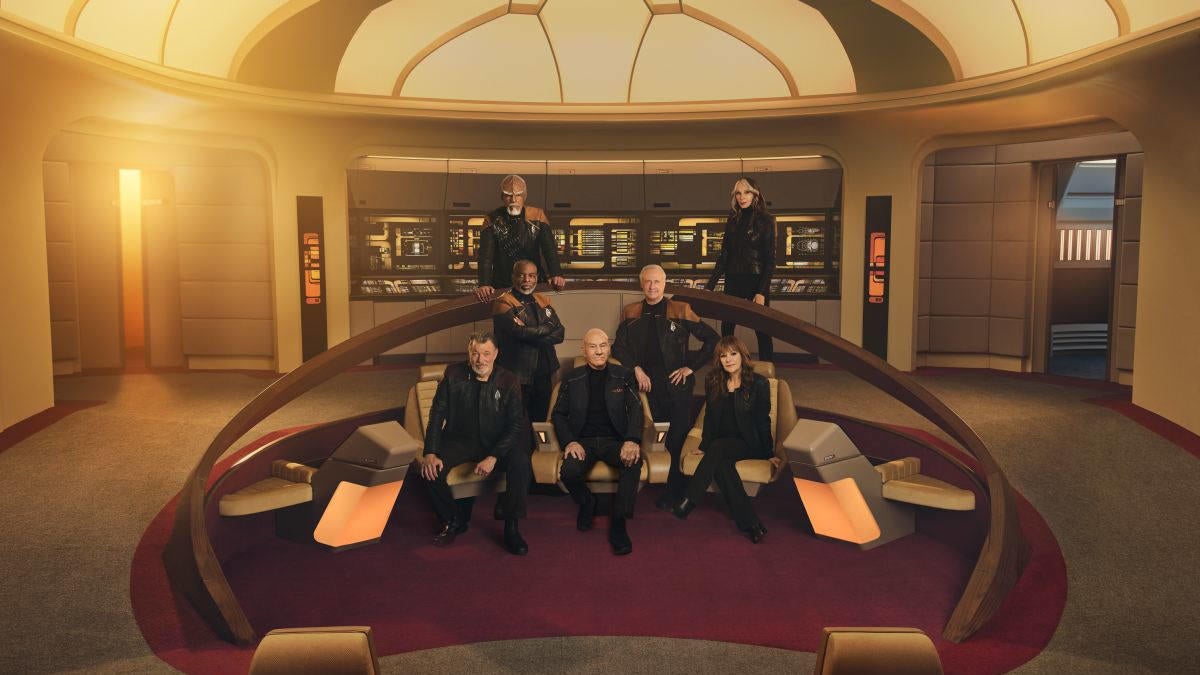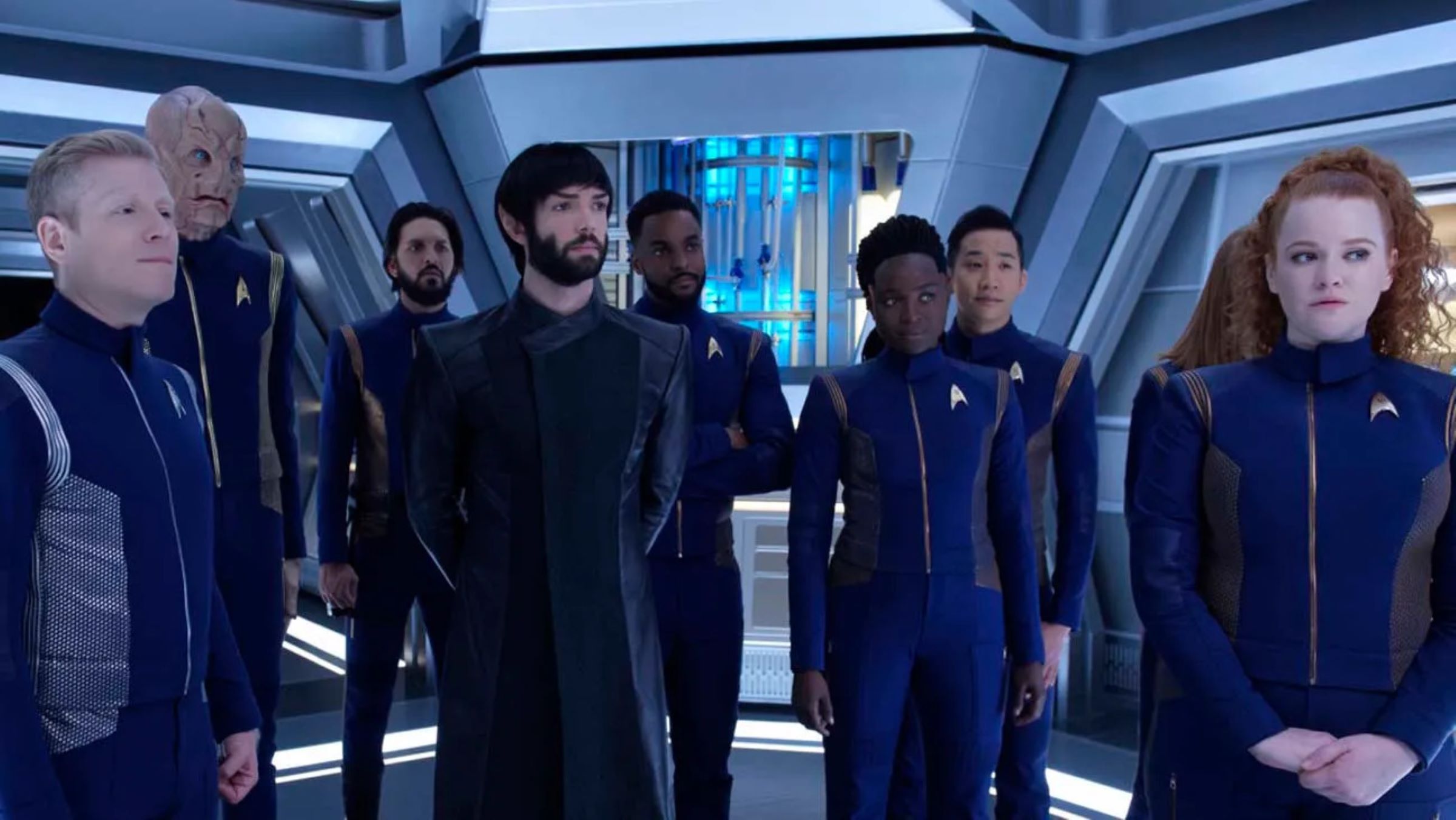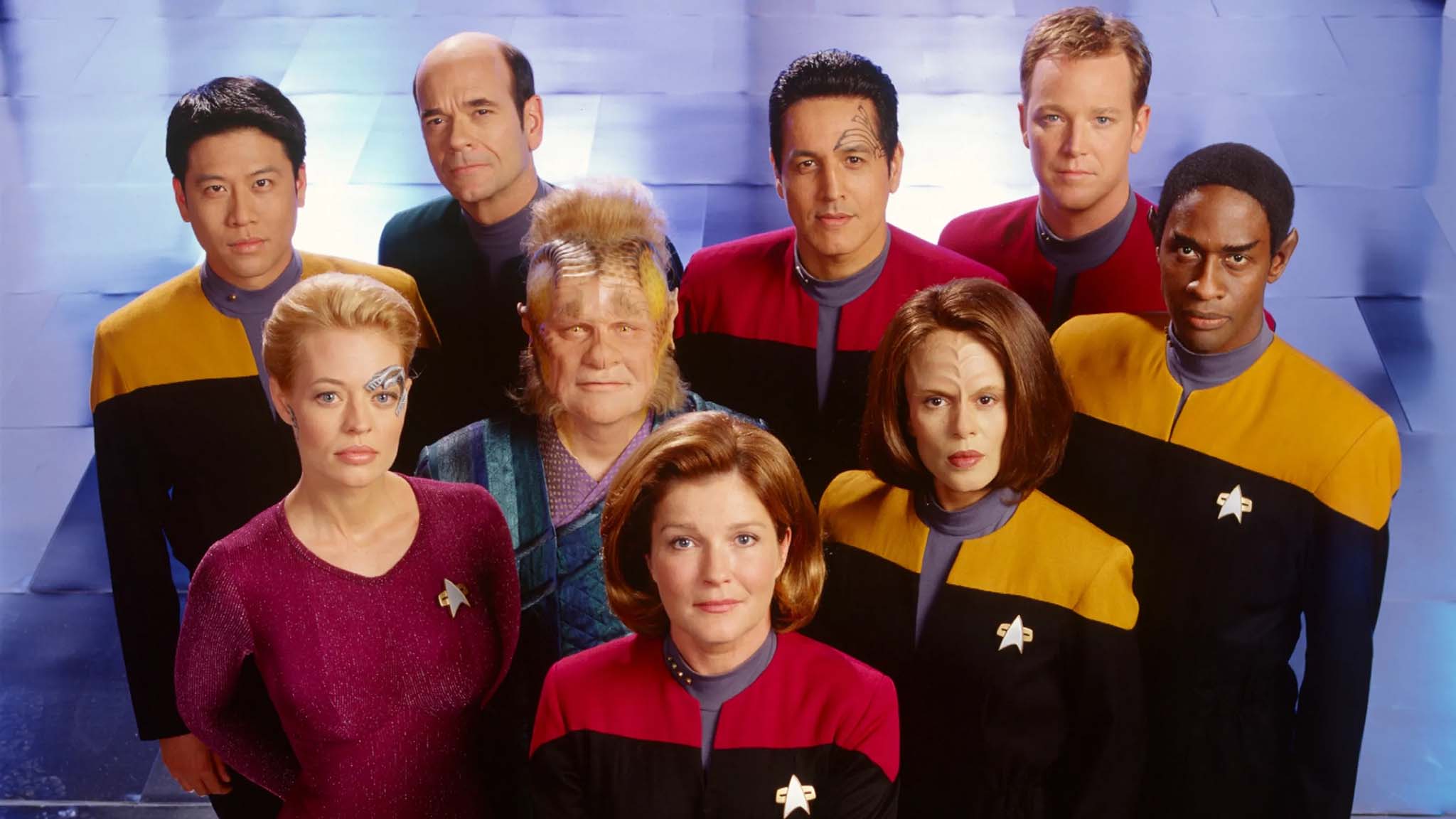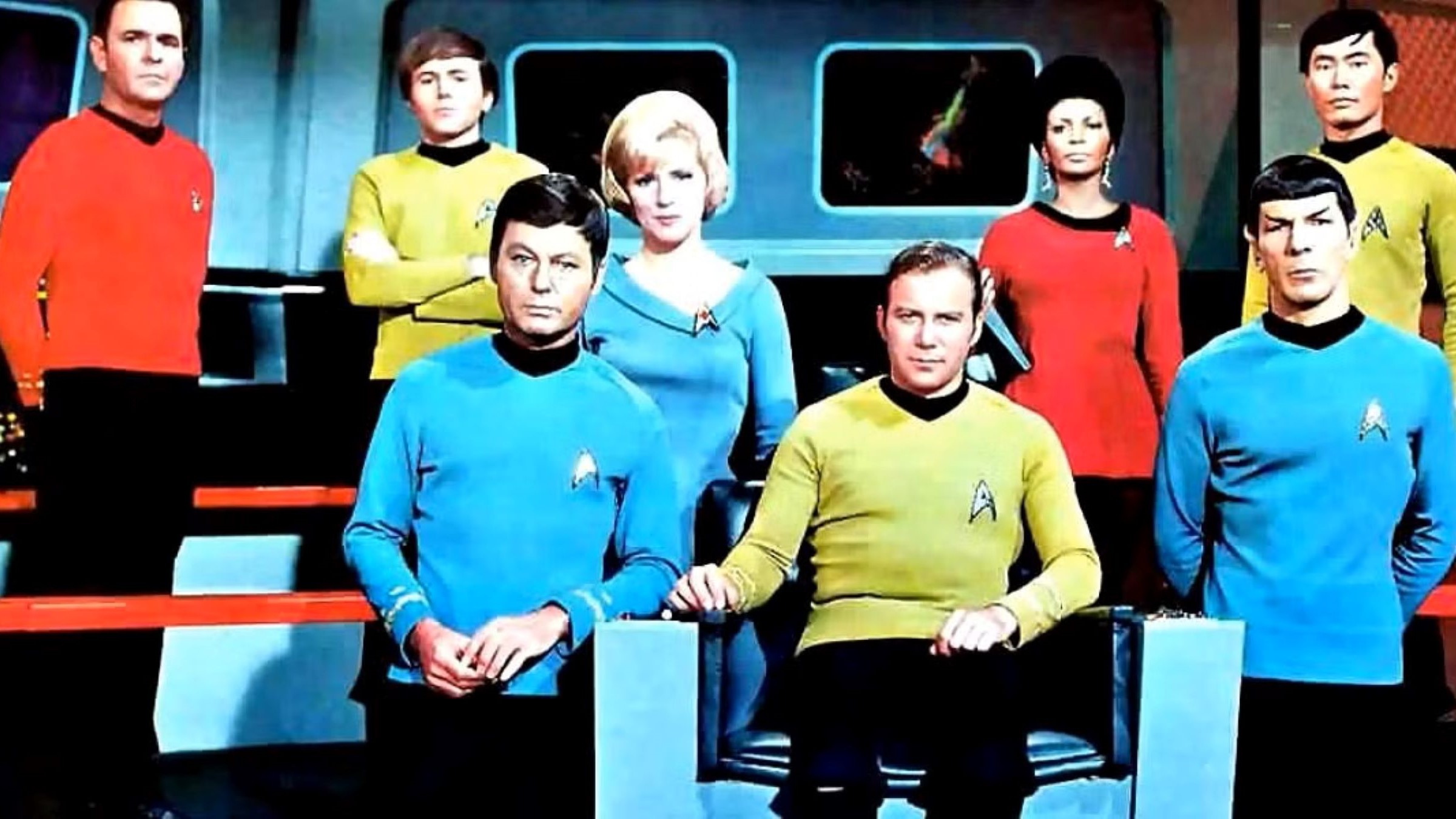
For over six decades now, starting with “Star Trek: The Original Series” in 1966, the Star Trek universe has provided an abundance of thrilling space explorations across various shows, movies, and numerous spin-offs that include comics, novels, and fan creations. This expansive franchise, which initially started modestly, has evolved into one of the most triumphant science-fiction series in history. With the upcoming “Star Trek: Starfleet Academy” and the return of iconic characters like Kirk and Spock in “Star Trek: Strange New Worlds,” being a Trekkie has never been more exciting.
Star Trek boasts a vast array of series, each introducing unique characters and themes, ensuring there’s something for every viewer. Each fan tends to find their personal favorite aspect within the shows, which is a testament to the diversity among Trek series. This variety, however, has sparked heated discussions among Trekkies as they argue about which shows accurately represent the franchise and which ones may be better left in the past. Some series have innovatively pushed the boundaries of Trek, while others have admittedly struggled to find their footing.
We’ve revisited each live-action Star Trek series that has been produced thus far. Below you’ll find our ranking of them, starting from the least preferred to the most favored.
8) Star Trek: Enterprise

Initially known as just “Enterprise“, this fifth spin-off from “The Original Series” aimed to break away from the conventional patterns set by series like “Star Trek: The Next Generation ” or “Star Trek: Voyager“. Instead of introducing another crew mirroring Kirk and his peers, it chose a different path, traveling back in time to portray humanity’s initial forays into deep space during the 22nd century – long before the Federation was established. Essentially functioning as a bridge connecting our present to the imagined future portrayed in the earlier “Star Trek” series, “Star Trek: Enterprise” had an innovative premise, but its execution fell short of expectations.
Scott Bakula struggled to excel as Captain Archer, but Jolene Blalock eventually added complexity to her character T’Pol, who was frequently portrayed in a sexually suggestive manner alongside Trip. The initial seasons were criticized for weak storylines that seemed like recycled versions of past shows, and the controversial pop ballad opening theme didn’t help either. However, as the series started to improve with longer story arcs and engaging Mirror Universe episodes in Seasons 3 and 4, it was unfortunately cancelled. Today, the show is appreciated by dedicated fans for its exploration of the origins of the Federation and Starfleet regulations.
7) Star Trek: Picard

In theory, “Star Trek: Picard” seemed destined for immediate acclaim, given Patrick Stewart’s return to one of sci-fi’s most legendary roles. However, the series encountered stumbling blocks as it grappled with its grand ambitions. Fans eagerly awaited a trip down memory lane with “The Next Generation,” but the first season’s android enigma left more heads scratching than inspired, while the second season’s time-travel plot occasionally veered towards incomprehensibility, even with the emotional reappearance of Q (John de Lancie) and Guinan (Whoopi Goldberg).
In Season 3, there was a significant change with the return of characters from The Next Generation like Jonathan Frakes and Michael Dorn. Under showrunner Terry Matalas, the storytelling became more coherent, and it seemed that the show truly honored its roots, living up to fans’ expectations. Many consider Season 3 to be one of the best seasons of Star Trek ever made, as it delved deeper into beloved characters and provided them with fitting endings they deserved. However, it’s unfortunate that it took two less impressive seasons for this to happen, and despite a powerful conclusion, the spinoff series “Star Trek: Legacy” was not greenlit.
6) Star Trek: Discovery

Initiated by Bryan Fuller and Alex Kurtzman, “Star Trek: Discovery” kicked off the contemporary Trek streaming phase with a powerful debut, offering daring storylines packed with surprising turns and visually stunning scenes that breathed life into the Trek universe for a fresh audience. Sonequa Martin-Green’s performance as Michael Burnham was particularly noteworthy, and one of the show’s biggest strengths was its casting. Anson Mount stepped into the role of Captain Christopher Pike, Ethan Peck portrayed Spock, and Rebecca Romijn took on Number One. These exceptional actors contributed significantly to the success of the second season, which eventually led to a spinoff series titled “Strange New Worlds“. The show found its groove in Season 3 when Burnham ultimately claimed her spot in the Captain’s Chair, and as Discovery journeyed into the 32nd century, it allowed the narrative to delve into and contemplate humanity’s most distant future yet.
In later seasons, the show “Discovery” started to emphasize cosmic threats and emotional intensity excessively, departing from its original blend of grand concepts and character development. Fans were divided over changes such as altered Klingons and the controversial relationship between Burnham and Spock. Although the series may have overstayed its welcome by the end, it will be recognized for its innovative spirit, diverse representation with trailblazing LGBTQ+ characters, and abundance of mirror-universe stories. Its significant impact on the Star Trek franchise in the contemporary streaming era deserves recognition.
5) Star Trek: Voyager

Presenting Star Trek’s pioneering female Captain for the first time, Star Trek: Voyager, found itself in an exciting predicament in the Delta Quadrant – a premise that ranks among the most captivating in Trek history, despite occasional uneven execution. Initially, it faced tough competition from the superior Star Trek: Deep Space Nine, but Kate Mulgrew’s character Captain Janeway paved the way for change. The show struggled during its initial seasons, however, a transformation occurred with the arrival of Jeri Ryan’s former Borg character Seven of Nine in Season 4, who eventually became one of the most compelling characters in Star Trek history, making the series essential viewing.
Despite occasional challenges with uneven storytelling, the show sometimes overlooked promising characters such as Harry Kim, whom fans believe deserved a promotion. Moreover, the standalone episode structure sometimes neglected character development, particularly the intriguing relationship between Janeway and Chakotay that many viewers found captivating. Some characters were questionable and even irritating at times (let’s not mention names like Neelix). Perhaps its most significant flaw was playing it too safe, not fully exploring its concept as deeply as it could have, preferring to focus on the Kazon instead of intriguing factions like the Vidiians or Borg. Nevertheless, Voyager provided memorable episodes such as “Blink of an Eye” and “Counterpoint.
4) Star Trek: The Original Series

It’s not quite fair to expect “Star Trek: The Original Series” (TOS) to outperform its successors, given the advancements in special effects and considering it was produced during the era of black-and-white television. However, TOS holds a unique place in history as it kickstarted the Star Trek universe with an unparalleled trio – Captain Kirk, Mr. Spock, and Dr. McCoy – and served as the blueprint for all that followed. Its groundbreaking narrative and socially progressive allegories were revolutionary at the time and continue to be timeless even today. That’s why Star Trek in all its forms remains popular, with TOS being the series that initiated countless spin-offs.
To put it simply, The Original Series (TOS) is a relic of the 1960s, with outdated elements, occasional controversial plotlines, and instances of sexism. Nevertheless, its quaint sets and vibrant costumes have an endearing quality for many fans. It’s undeniable that TOS was remarkable given its limited resources, and it certainly provided us with some incredible sci-fi classics. However, subsequent Trek series are generally considered to have further developed and exceeded the groundwork laid by TOS. Regardless, without this modest series, there would be no Star Trek as we know it today.
3) Star Trek: Strange New Worlds

In a departure from previous series, “Strange New Worlds”, a spinoff of “Discovery” and prequel to “The Original Series”, delves into the early voyages of the “Enterprise” under the guidance of showrunners Akiva Goldsman and Henry Alonso Myers. The series has garnered favor among fans due to its revival of a classic format: self-contained episodes. Anson Mount’s charismatic Captain Pike helms a crew that features both refreshed versions of beloved characters, such as Spock and Uhura, alongside new, compelling additions. Despite the potential criticism for revisiting established grounds, “Strange New Worlds” has proven to be one of the franchise’s finest, thriving on strong casting choices and ensemble storytelling.
The new series, Strange New Worlds, gives off an impression of what Star Trek: The Original Series might have been like if it were made today, offering a fresh perspective on Gene Roddenbury’s vision. With a more playful tone, a sense of adventure reminiscent of the show’s origins, and even a musical episode, Strange New Worlds doesn’t shy away from its title while still delivering the unexpected. Anson Mount’s portrayal of Pike brings a comedic touch and a fatherly charm that makes watching the show worthwhile on its own. If it continues at this pace, it has potential to move up in the rankings in future years.
2) Star Trek: Deep Space Nine

Initially, some critics dismissed Deep Space Nine due to its focus on a space station instead of a ship, fearing it might lead to stagnant storylines. However, Deep Space Nine proved everyone wrong by emerging as one of the boldest and intricate Star Trek series. With innovative steps like shifting to serialized narratives, tackling religious themes head-on, and positioning the DS9 crew at the center of the Dominion War, it redefined Star Trek storytelling by moving away from episodic plots and offering some of the most groundbreaking stories in Trek’s history.
The charismatic Captain Sisko, portrayed by Avery Brooks, along with Nana Visitor’s strong-willed Kira Nerys, and an intriguing ensemble of supporting characters (including Quark, Garak, and Worf) gave “DS9” an extraordinary richness. It was refreshing to delve into a grittier aspect of the franchise and discover fresh perspectives on Starfleet and the Federation. Episodes such as “In the Pale Moonlight” and “Far Beyond the Stars” took “DS9” to innovative heights, earning it a place among the franchise’s most prestigious accomplishments. Nevertheless, the series demonstrated its ability to remain witty with episodes like “Take Me Out to the Holosuite” and the beloved “Trials and Tribble-ations,” which marked Trek’s 30th-anniversary special.
1) Star Trek: The Next Generation

Nestled at the summit is “Star Trek: The Next Generation.” Initially, it was met with skepticism, as many deemed it an unworthy successor to the original series. However, in 1987, when it first aired, it was unique, being the first major spin-off (disregarding the animated series that reused characters and voices from the original series). The early seasons were rocky, but by Season 3, the show found its footing. The cast, led by Patrick Stewart as the composed Captain Picard, Jonathan Frakes as the daring Riker reminiscent of Kirk’s adventurous character, and Brent Spiner as the emblematic Data (who transcended his role as a replacement for Spock), created a vibrant and captivating ensemble that stood its ground against the legends like Bones and Scotty from the previous series.
In a unique and compelling manner, The Next Generation (TNG) embodies the Star Trek philosophy more completely than any other show, including Deep Space Nine (DS9). TNG’s combination of optimism, philosophical exploration, and adventure set the benchmark for what Star Trek can achieve. It built upon the elements that made The Original Series great while carving out its own distinctive path and making full use of its talented ensemble cast. Episodes like “The Best of Both Worlds” and “The Inner Light” continue to be regarded as some of the best in Trek history. TNG not only revitalized the franchise but also demonstrated that Star Trek could prosper beyond Kirk and Spock, paving the way for a new era. The crew of TNG truly felt like a family. Whether engaging in moral debates in the ready room, confronting the Borg (who the show first introduced), or enjoying a peaceful game of poker, TNG expertly balanced spectacle with human emotion like no other. For many fans, it offers the quintessential Star Trek experience and serves as a benchmark for every new series to aspire to.
All Star Trek shows are streaming now on Paramount+.
What’s your preferred Star Trek series? Are you more drawn to the adventures of the early explorers in the original series, the complex storylines in Deep Space Nine, or the exciting new voyages of Strange New Worlds? Share your thoughts below!
https://comicbook.com/tv-shows/news/iconic-opening-credits-sci-fi-x-files-star-trek/embed/#
Read More
- Hazbin Hotel season 3 release date speculation and latest news
- 10 Chilling British Horror Miniseries on Streaming That Will Keep You Up All Night
- Where Winds Meet: How To Defeat Shadow Puppeteer (Boss Guide)
- Zootopia 2 Reactions Raise Eyebrows as Early Viewers Note “Timely Social Commentary”
- Meet the cast of Mighty Nein: Every Critical Role character explained
- Victoria Beckham Addresses David Beckham Affair Speculation
- The Mound: Omen of Cthulhu is a 4-Player Co-Op Survival Horror Game Inspired by Lovecraft’s Works
- 10 Best Demon Slayer Quotes of All Time, Ranked
- HBO Max Is About To Lose One of the 1980s Defining Horror Movies
- Strictly Come Dancing professional in tears after judges comments
2025-08-24 02:13